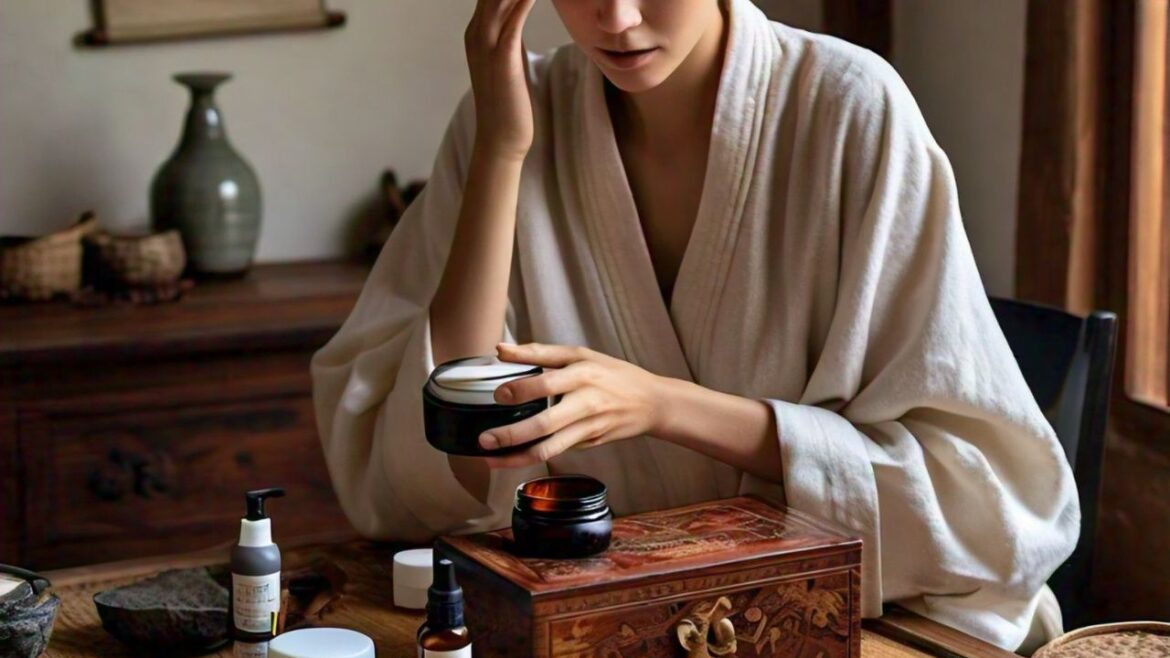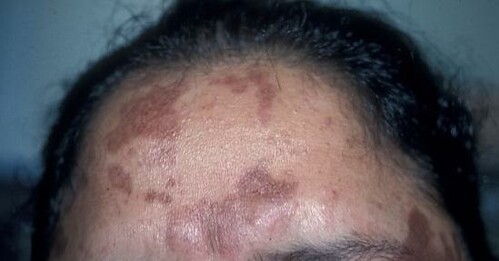Cultural Skincare Practices from Around the World
https://icdrc.org/wp-content/uploads/2024/06/WhatsApp-Image-2024-06-22-at-6.14.39-PM-1024x1024.jpeg 1024 1024 admin admin https://secure.gravatar.com/avatar/693ccb227eb6527287caaa4e9eb13c6e?s=96&d=mm&r=gCultural Skincare Practices from Around the World
Skincare is a universal practice, yet the methods, ingredients, and rituals vary significantly across different cultures. Each tradition is rooted in the unique history, environment, and values of the region, offering a fascinating glimpse into the diverse ways humans care for their skin. In this blog, we will explore various cultural skincare practices from around the world, delving into the secrets of beauty routines from Asia, Africa, Europe, the Americas, and the Middle East.
Asia
Japan: The Art of Layering
Japanese skincare is renowned for its meticulous and multi-step routines that emphasize hydration and gentle care. The typical Japanese skincare regimen involves:
- Double Cleansing: Starting with an oil-based cleanser to remove makeup and sunscreen, followed by a water-based cleanser to cleanse the skin.
- Exfoliation: Using gentle exfoliants to remove dead skin cells without stripping the skin of moisture.
- Toning: Applying lightweight, hydrating toners to prepare the skin for further treatments.
- Essence: A unique step where a watery, nutrient-rich essence is applied to boost hydration.
- Serum: Targeted treatments for specific skin concerns such as wrinkles, dark spots, or acne.
- Moisturizer: Locking in hydration with a moisturizing cream or lotion.
- Sunscreen: Protecting the skin from harmful UV rays.
Ingredients like green tea, rice bran, and seaweed are commonly used due to their antioxidant and hydrating properties. The Japanese approach to skincare is holistic, focusing not only on products but also on lifestyle factors like diet and stress management.
Korea: Innovation and Sheet Masks
Korean skincare has taken the world by storm with its innovative products and techniques. The famous “10-step Korean skincare routine” includes:
- Oil Cleanser: For makeup removal.
- Foam Cleanser: For deep cleansing.
- Exfoliator: To slough off dead skin.
- Toner: To balance pH levels.
- Essence: For hydration and skin repair.
- Ampoule: Concentrated serums for targeted concerns.
- Sheet Mask: Infused with various beneficial ingredients for intensive treatment.
- Eye Cream: To address delicate under-eye skin.
- Moisturizer: To maintain hydration.
- Sunscreen: Essential for daily protection.
K-Beauty emphasizes hydration, brightening, and anti-aging, with a focus on achieving “glass skin,” a term used to describe flawless, dewy, and luminous skin. Popular ingredients include snail mucin, ginseng, and centella asiatica, each offering unique benefits from healing to anti-inflammatory properties.
China: Herbal Remedies and Massage
Chinese skincare practices are deeply rooted in Traditional Chinese Medicine (TCM), which emphasizes balance and harmony. Key components include:
- Herbal Remedies: Ingredients like ginseng, pearl powder, and goji berries are commonly used for their anti-aging and brightening properties.
- Facial Massage: Techniques like Gua Sha and jade rolling are used to improve circulation, reduce puffiness, and promote lymphatic drainage.
- Diet and Lifestyle: Emphasis on a balanced diet, proper hydration, and stress management.
Chinese skincare often involves natural, herbal-based products, focusing on long-term skin health rather than quick fixes. The philosophy behind these practices is holistic, considering the body’s overall well-being.
Africa
Ghana: Shea Butter Magic
In West Africa, particularly Ghana, shea butter is a staple in skincare. Extracted from the nuts of the shea tree, shea butter is rich in vitamins A and E, essential fatty acids, and antioxidants. It is used for:
- Moisturizing: Shea butter is an excellent moisturizer for both skin and hair.
- Healing: It helps in treating minor cuts, burns, and skin conditions like eczema and dermatitis.
- Anti-aging: The antioxidants in shea butter help to combat signs of aging.
The traditional method of extracting shea butter involves women manually collecting, boiling, and grinding the nuts, a process that has been passed down through generations. This communal activity not only produces a valuable skincare product but also fosters social bonds and supports local economies.
Morocco: Argan Oil Elixir
Argan oil, often referred to as “liquid gold,” is a key component of Moroccan skincare. Extracted from the kernels of the argan tree, it is known for its:
- Moisturizing Properties: High in vitamin E and fatty acids, argan oil is a superb moisturizer.
- Anti-inflammatory Benefits: It helps to soothe irritated skin and reduce inflammation.
- Anti-aging Effects: The antioxidants in argan oil help to reduce wrinkles and improve skin elasticity.
Moroccan women have used argan oil for centuries, not only for skincare but also for hair care and culinary purposes. The traditional methods of extraction, involving manual pressing, ensure that the oil retains its beneficial properties.
Europe
France: Effortless Elegance
People know French women for their effortless beauty, reflected in their skincare routines. Key elements include:
- Micellar Water: A staple in French skincare, micellar water gently cleanses and removes makeup without stripping the skin.
- Thermal Spring Water: Used to soothe and hydrate the skin, thermal spring water is rich in minerals and has anti-inflammatory properties.
- Pharmacy Brands: French pharmacies are renowned for their high-quality skincare products, often featuring brands like Avène, La Roche-Posay, and Bioderma.
French skincare emphasizes a minimalist approach, focusing on high-quality products and consistency rather than an extensive regimen. The philosophy is to enhance natural beauty rather than masking it.
Greece: Olive Oil and Natural Remedies
Greek skincare traditions date back to ancient times and often involve natural ingredients such as:
- Olive Oil: Rich in antioxidants and vitamins, olive oil is used as a moisturizer and cleanser.
- Honey: Known for its antibacterial and moisturizing properties, honey is used in masks and treatments.
- Yogurt: Greek yogurt is applied to soothe and hydrate the skin.
People celebrate these natural remedies for their simplicity and effectiveness. The Mediterranean diet, rich in fruits, vegetables, and healthy fats, also plays a crucial role in maintaining healthy skin.
The Americas
Indigenous North America: Earth-Based Ingredients
Indigenous peoples of North America have long used natural ingredients for skincare, rooted in a deep connection with the earth. Key practices include:
- Clay Masks: Different types of clay are used to detoxify and purify the skin.
- Herbal Infusions: Plants like sage, sweetgrass, and chamomile are used in various treatments.
- Natural Oils: Oils from plants such as jojoba and sunflower are used for moisturizing and healing.
These practices are not only about skincare but also about respecting and preserving the natural environment.
Brazil: Amazonian Secrets
The rich biodiversity of the Amazon rainforest heavily influences how Brazilians approach skincare. Key ingredients include:
- Açaí Berry: Packed with antioxidants, açaí is used in treatments to protect and rejuvenate the skin.
- Buriti Oil: Extracted from the buriti fruit, this oil is rich in beta-carotene and provides intense hydration.
- Cupuaçu Butter: A highly moisturizing ingredient, cupuaçu butter helps to improve skin elasticity and softness.
Brazilian beauty rituals often incorporate these natural ingredients, reflecting a deep connection with the land and its resources.
Middle East
Turkey: Hammam Rituals
The Turkish Hammam, or bath, is a centuries-old tradition that combines cleansing and relaxation. The Hammam experience includes:
- Steam Bath: To open pores and soften the skin.
- Kese: A thorough exfoliation using a special mitt to remove dead skin cells.
- Foam Massage: A luxurious foam massage to cleanse and relax the body.
- Hydration: Applying nourishing oils like rose or argan oil to hydrate the skin.
This ritual is not only about physical cleansing but also about mental relaxation and rejuvenation.
Iran: Saffron and Rosewater
Iranian skincare often features luxurious ingredients such as:
- Saffron: Known for its brightening and anti-inflammatory properties.
- Rosewater: Used as a toner and hydrating mist, rosewater is celebrated for its soothing effects.
These ingredients have been used for centuries in Persian beauty rituals, reflecting a rich cultural heritage.
Conclusion
The diversity of cultural skincare practices around the world highlights the myriad ways in which humans have harnessed the power of nature and tradition to care for their skin. From the meticulous routines of Japan and Korea to the natural remedies of Greece and Indigenous North America, each tradition offers valuable insights and time-tested techniques. As the global beauty industry continues to evolve, there is much to learn and appreciate from these cultural practices, reminding us that the pursuit of healthy, radiant skin is a universal endeavor.
Learn about myths in skincare: Skincare Myths Debunked: Fact vs. Fiction
Effects of antioxidants on skin: https://pubmed.ncbi.nlm.nih.gov/22913443/#:~:text=Antioxidants%20protect%20skin%20cells%20against,aging%2C%20inflammation%2C%20and%20photodamage.

